Learning Outcomes
After this course, participants will be able to:
- Discuss the efficacy of the ReSound Relief app with their patients.
- Categorize Personal data versus Sensitive Personal Data and explain how data is collected and used for the ReSound Relief app with their patients.
- Name the basic components of a tinnitus management program and explain the rationale for each.
Introduction
Tinnitus is much more common than we often think. It is believed that the prevalence of tinnitus at any given point in time is over 25%, and the prevalence of those experiencing frequent tinnitus is almost 8% (Shargarodsky et al, 2010). It is estimated that approximately 90% of people suffering from persistent tinnitus do not seek help (Tunkel et al, 2014). The reasons for not seeking help can be that the person does not know where to go, or that there is no one in their immediate geographic location that actively offers tinnitus services. Also, some of these individuals may not experience their tinnitus as bothersome enough to seek medical treatment. They may even find solutions on their own that work for them personally. However, this still leaves a very large portion of this population without the help they need.
There are many existing protocols available to assist in tinnitus management. The more common management programs are Tinnitus Retraining Therapy, Progressive Tinnitus Management and Cognitive Behavioral Therapy. Other programs include Tinnitus Activities Treatment and Mindfulness Based Tinnitus Therapy (a list of websites for the different programs appears at the end of this article). Although each of these programs has unique strategies and recommendations, they all share a few common underlying principles. For one thing, all the programs promote that sound therapy combined with counseling, offers the best chance of success. Therefore, they all suggest a combined approach, incorporating both sound therapy and counseling into their protocols. There are also proprietary hardware-driven tinnitus management programs, such as “the Levo System” from Otoharmonics and “Neuromonics”. Both also introduce counseling components to their protocols, which are used in combination with their proprietary hardware solutions. Because there are so many tinnitus management options, it is easy to see why many HCPs find providing tinnitus service confusing and challenging, and many people suffering from tinnitus struggle to understand what might be the best solution for them.
With the introduction of mobile applications (apps) in recent years, people suffering from tinnitus have direct access to more tinnitus tools than ever before, and incredibly large amounts of data are being collected on how users are interacting with and utilizing these apps. Not all of these apps are based on clinical standards, and many offer nothing more than a library of sounds to play. However, there are apps available that focus on helping the individual to manage tinnitus. ReSound Relief is a good example. It is a tinnitus-focused app that includes not only a library of high-definition sounds, but also interactive exercises and meditations. In addition, counseling information is provided to educate the user on how to appropriately manage their tinnitus.
The goal of ReSound Relief is to support both the hearing care professional (HCP) and patient with convenient access to tinnitus management tools and education as they collaborate to create the best plan of action. In addition, collecting valuable data helps us understand the tinnitus management needs of those suffering from tinnitus like never before. The questions then arise, with so many different approaches and management programs for tinnitus management, can an app like ReSound Relief bring all the pieces of the tinnitus puzzle together, and provide measurable benefit to those who use it? In addition, what types of data are collected by the ReSound Relief app and how is this data used?
Sound Therapy
The main goal of sound therapy is to divert one’s attention away from the tinnitus. This is accomplished by presenting other sounds to minimize the perceived contrast between the tinnitus and the background environment (Figure 1). For example, tinnitus is easily detected in a quiet room since there is a large discrepancy between the loudness of the tinnitus and the quietness of the environment. By enriching the environment with sound, we increase the loudness of the background environment, thereby making the tinnitus less prominent and less noticeable. Sound therapy can have immediate effects, helping to reduce tinnitus audibility (e.g. masking/partial masking) which can also potentially result in taming the underlying tinnitus. Sound stimulation may also reverse or modify the abnormal cortical reorganization thought to be responsible for tinnitus (Searchfield et al, 2010).
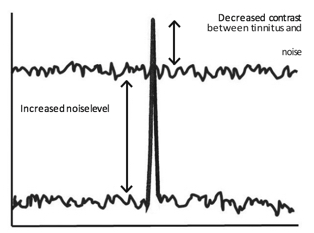
Figure 1. Increasing the background noise level reduces the contrast between the tinnitus and the background sound level.
Individuals with tinnitus have varied preferences for the sounds used in sound therapy. This shouldn’t come as a big surprise. View someone’s music list on their smartphone or tablet and the chances two people having the exact same playlist are highly unlikely. The sounds we listen to, whether they are by choice or by-products of a particular environment, vary significantly from person to person (Tutaj et al, 2018). The sounds we prefer to listen to can even vary according to specific factors such as mood, time of day, or location, to name a few. Searchfield et al (2010) pointed out that sounds used for sound therapy can vary in their temporal, spectral and emotion-evoking characteristics, and showed that individual differences can influence the effectiveness of specific sounds over others. Henry et al (2004) asked study participants with tinnitus to evaluate different noises and nature-based sounds for sound therapy, and found that Air and Water sounds caused the least amount of annoyance to the subjects’ tinnitus. These sounds were preferred over the other options of narrowband and broadband stimuli, as well as other nature sounds.
In the past, people suffering from tinnitus have had limited sound therapy options, which has made it challenging to find the flexibility and personalization suggested by many tinnitus management protocols. A basic instrument that generates white noise or a set of headphones and a CD player were two of the more flexible options in the past. Times have changed, and in recent years tinnitus has moved more to the forefront of our industry, as it appears to be a growing concern for many people.
As mentioned earlier, 8% of the population experiencing tinnitus have it to a degree where it could be clinically treatable (Shargarodsky et al, 2010). In fact, the US Veterans Administration Annual Benefits report stated that there was an approximately 44% increase of tinnitus-related service connections to veterans between 2014 and 2016. Furthermore, tinnitus contributes to 10.5% of all service connections, which is the largest percentage of patient compensation in the Veterans Administration (Veterans Benefits Administration [VBA], 2017). With what appears to be a growing number of people requiring clinical services to help manage tinnitus, having solutions that incorporate both clinically validated elements and meet the demands of patient individuality is paramount for successful implementation of sound therapy.
Because the needs and preferences for sound therapy can vary greatly from person to person, ReSound Relief incorporates a library of sounds that differ in their spectral and temporal characteristics, as Searchfield et al (2010) suggested was important to accommodate individuals, and also includes a variety of air and water based sounds, which Henry et al (2004) showed to be effective in reducing annoyance (Figure 2).
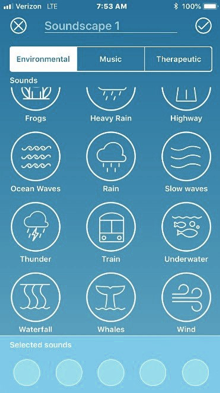
Figure 2. Combine up to 5 sounds, including air and water sounds, from ReSound Relief’s High-definition sound library and create the soundscape that helps best.
Counseling
It is generally agreed that education and counseling play a large role in effective tinnitus management, and clinicians should educate people who have persistent, bothersome tinnitus about management strategies. Counseling should include information on the link between tinnitus and hearing loss, as well lifestyle factors that can have positive and negative effects on tinnitus management. Additional information on the damaging effects of excessive noise exposure and hearing protection from noise should be presented. Follow-up appointments and reassessment of the tinnitus should be considered if the tinnitus remains bothersome or if it worsens over time (Tunkel et al, 2014). As discussed however, accessing this information can present challenges. It is common for people to turn to the internet and use search engines to research information on tinnitus and tinnitus management. Because of a lack of credible information, the unfortunate reality is that many are led to believe their tinnitus can be cured quickly. This can lead to misguided online searches using key words like ‘tinnitus cures’ and ‘eliminate tinnitus’, which can expose individuals to unproven and sometimes costly remedies and claims that have no evidence-based merit. In addition, with the increase of app usage, a number of sound therapy and tinnitus-related apps have been developed and made available on the corresponding app stores. Many of these apps offer sound files to choose from, but most fall short when it comes to providing clinically-based informational counseling on how to appropriately manage tinnitus.
The opportunity to learn new tinnitus information and management concepts should be made available to anyone with tinnitus. Everyone learns at different rates and speeds, and the degree to which counseling and information is presented depends on the person’s ability to recall information and can be modified accordingly (Henry et al, 2005). Although informational counseling is an important part of successful tinnitus management, it has been shown that 40-80% of the information can be forgotten immediately (Kessels, 2003). Furthermore, if individuals cannot recall the counseling information, they are more likely to be less satisfied and less compliant with treatment recommendations, and to experience poorer outcomes to treatment (Margolis, 2004). A logical assumption from these findings is that individuals could likely utilize the information more effectively if they had a resource allowing them quick and convenient access to it when they need it. Resound Relief is designed with this need in mind. It incorporates a variety of educational topics in the Learn section, such as “What causes tinnitus?”, “Common tinnitus therapies” and “Better Sleep” tips, among others (Figure 3).
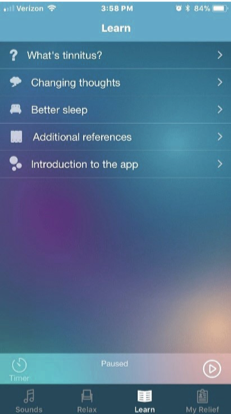
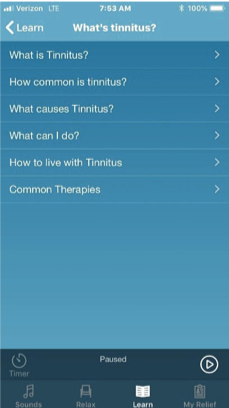
Figure 3. The Learn section offers a variety of information counseling topics to help educate users.
Efficacy of ReSound Relief
ReSound Relief incorporates a number of clinically-validated elements, such as sound therapy and informational counseling. However, does simply incorporating these elements make ReSound Relief a valid platform for managing tinnitus? A research group led by Professor Henryk Skarzynski, M.D., at the World Hearing Center of the Institute of Physiology and Pathology of Hearing in Warsaw, Poland, showed that patients who used the ReSound Relief app as their primary tinnitus management tool presented reduced tinnitus perception after three months.
Using two objective measures to help quantify tinnitus perception, the Tinnitus Functional Index (TFI) and the Tinnitus Handicap Inventory (THI) questionnaires, the research group found significant reduction in both measures. Before using the ReSound Relief app, the grouped TFI average was 45.7, indicating a moderate tinnitus problem, and after using Resound Relief for three months, the TFI score reduced to 30.5, indicating a mild tinnitus problem. For the second measure, the grouped THI average before using the ReSound Relief app was 53.4, indicating a moderate tinnitus problem, and 32.2 after using ReSound Relief for three months, indicating a mild tinnitus problem (Skarzynski et al, 2018). This study supports the use of ReSound Relief as an effective tool in helping to manage tinnitus.
Additional support for the use of the ReSound Relief app comes from clinicians themselves. A 2015 survey showed that many clinical audiologists would recommend the ReSound Relief app to their patients struggling with tinnitus. Fifty-three Veteran’s Administration clinical audiologists collectively assigned a 4.5/5 rating, when asked the question “Would you recommend ReSound Relief to your tinnitus patients?” In this survey, a ‘5’ represented a ‘Strongly Agree’ response, and ‘1’ represented a ‘Strongly Disagree’ response (Piskosz & Hallenbeck, 2015).
Additionally, many of the features in ReSound Relief have been developed with some of the leading tinnitus experts in hearing healthcare. For example, the meditation feature combines guided meditations created by both Dr. Jennifer Gans as well as the Student Wellness Center at Dartmouth College.
Many of the Learn section items have been developed in collaboration with Dr. Jim Henry and his team at the National Center for Rehabilitative Auditory Research, who are responsible for the creation and clinical implementation of the Progressive Tinnitus Management protocol. ReSound Relief is also endorsed by tinnitus organizations, such as the Tinnitus Practitioners Association, a professional organization of hearing care professionals dedicated to providing tinnitus and sound sensitivity care.
What is Big Data?
Social Media and online purchasing have changed our lives in numerous ways, such as how we connect as communities and cultures, our accessibility to goods and services and how we interact and communicate with one another on a day to day basis. Every day, there are over 5 billion likes on Facebook and over 6 billion searches on Google worldwide, contributing to the over 2.5 quintillion bytes of data created daily (Mar, 2018). In fact, in 2013 experts claimed that 90% of all data was generated over the two years prior, and Business Insider Magazine expects the current total to double in the next two years (Business Insider, 2017; SINTEF, 2013). This increase in data creation and usage is largely attributed to the increase in mobile smart phone/tablet adoption. A 2016 Nielsen report estimated that the average American is spending almost 11 hours a day connected to a computer or mobile device. As of 2014, mobile smart phone/tablets have been used a majority of that time, a trend that continues to increase with the popularity of apps (Howard, 2016). As app usage increases, and we grant access to more of our data, what information exactly, are we giving access to and where does it go?
Social media, online retail and search engines are some of the biggest collectors of data in the world today, and we now have access to them at the push of a button on our mobile devices. This data allows companies to understand their users better, and fine-tune what they advertise and promote to their users, according to users’ preferences and behavior. This is why when you go to your favorite online retail store, they often times already have suggested items before even purchasing anything. In order to do this, massive amounts of data, called Big Data, is collected.
Big data is an extremely large data set that may be analyzed computationally to reveal patterns, trends, and associations, especially relating to human behavior and interactions. Furthermore, big data is commonly categorized into a variety of segments. Two of those segments are “Personal Data” and “Sensitive Personal Data”. Personal Data is data that relates to a person who can be identified from the data (e.g. name, address, D.O.B). Sensitive Personal Data is data that includes information about an individual’s ethnic origin, political opinions, religious beliefs, sexual life, physical/mental health conditions, criminal convictions and/or alleged criminal offenses and related proceedings. There are strict requirements for how this data is processed, because this is sensitive data that has a very strong influence on our identity.
Personal data is often available in the Public Domain, and can typically be found doing a search for that person online. Sensitive Personal Data however, has much more strict rules about how that data can be accessed. The European Union in 2018 passed the General Data Protection Regulation (GDPR), which expands what falls into the Personal Data segment, and the individual’s rights over that data. A big part of the legislation is that individuals must give permission to use the data. Companies cannot collect and use data without the permission of the individual, and furthermore, the more personal the data, the more clearly written the Terms and Conditions need to be. This is very important with the growing biometric data industry, which collects health measures from individuals that can be used to identify that individual, along with sensitive health information
What Kind of Data Does ReSound Relief Collect?
The ReSound Relief app does not collect any Personal Data and/or Sensitive Personal Data. All the data collected in the ReSound Relief app is general usage data, meaning how any particular user is interacting with the features of the app. Examples of this are how often a user plays a sound, or what particular sound they choose, as well as how many times the app may crash, or malfunction. It can also collect data showing how many times a user accesses the Deep Breathing exercise, and for how long they use it, as well as how a user utilizes the Learn section, where they can educate themselves about potential causes, common therapies and tips to help them cope better with their tinnitus. All data collected in ReSound Relief is aggregated, and it is not possible to link it to any individual’s identity. The user’s data only appears as a generic user of the ReSound Relief app. Any Personal Data and/or Sensitive Personal Data shared by the user is owned and operated under their corresponding app store, such as the App Store for Apple and Google Play for Google. For apps, this is often in the form of credit card payments, which are tied to the individual’s corresponding app store profile.
Why is Data Collection Important for Tinnitus?
Over time, collective general usage data may show patterns, trends and tendencies of all users of the app, and how particular features are being used. These behaviors allow us to assess how the app is performing, what experiences users are having (both positive and negative) and learn about areas where we can make improvements, to help provide users a better experience. This is very important when it comes to the tinnitus population.
It appears a large portion of the tinnitus population goes untreated (Kochkin et al, 2011). There is a long list of potential reasons why this is: lack of educational standards for tinnitus, no universal established protocols and subgroup data, and lack of 3rd party funding, to name a few (Tunkel et al, 2014). Whatever the reasons may be, a large percentage of this population is seeking help they just cannot find.
Often, tinnitus patients are grouped into a general ‘tinnitus bucket’, although individuals may have very different causes and perceptions of their tinnitus, as well as unique needs on how to manage it. Just as patients with hearing loss can be unique in their diagnosis, fitting and progress, tinnitus patients should also be considered individually. Unfortunately, a lack of definitive tinnitus subgroup data makes it difficult to understand what the best course of action may be for a specific type of tinnitus. For example, consider someone who struggles with hearing loss due to aging, compared to someone with hearing loss due to a middle ear pathology that can be surgically treated. Although there are some similarities and overlap in how you would go about examining and providing amplification for these two individuals, there are many other considerations according to the specific situation, such as style of earmolds, frequency of post-op appointments and what clinical tests a Hearing Care Professional (HCP) may perform. There is very clear subgroup data on these different populations (e.g. age-related hearing loss versus otosclerosis), and therefore clear and established practices on what the best course of action for each case would be. This simply is not established in the tinnitus community, even though there are many types of tinnitus, and people react to their tinnitus perception in many different ways. Subgroup tinnitus data has proven to be very challenging to collect using more conventional methods of research, largely due to the time it takes to collect this information on a large scale. However, with big data collection, we may be able to see trends and behavioral patterns in users in just a few months, even weeks. These behaviors help us to collect insights and analytics that can potentially yield subgroup data to help us work with the tinnitus population more thoroughly and effectively.
Another concern for many HCP’s is the perception that tinnitus patients take up a lot of clinic time; without third party reimbursement in many countries, this can be a challenge in terms of clinic profitability. Tinnitus is often a difficult topic to address in the clinic, and tinnitus consultations can take upwards of an hour or more. ReSound Relief is designed to help HCPs overcome those difficulties by offering the most complete and flexible app toolset to help people manage their tinnitus. In addition to providing more than fifty High Definition sounds to choose from, the app also allows the user to create their own dynamic soundscapes, with the ability to layer up to 5 sounds (Figure 4). What makes ReSound Relief truly unique is that it also educates the user about their tinnitus, while providing personalization and guidance on how to better manage their own tinnitus (Figure 5). Because the app is interactive, and tracks usage, ReSound Relief can be used to recommend follow-up visits where HCPs can review progress, fine tune the program and discuss further steps with their patients (Figure 6).

Figure 4. Combine up to 5 sounds from our High Definition selection and create multi-layered dynamic soundscapes.
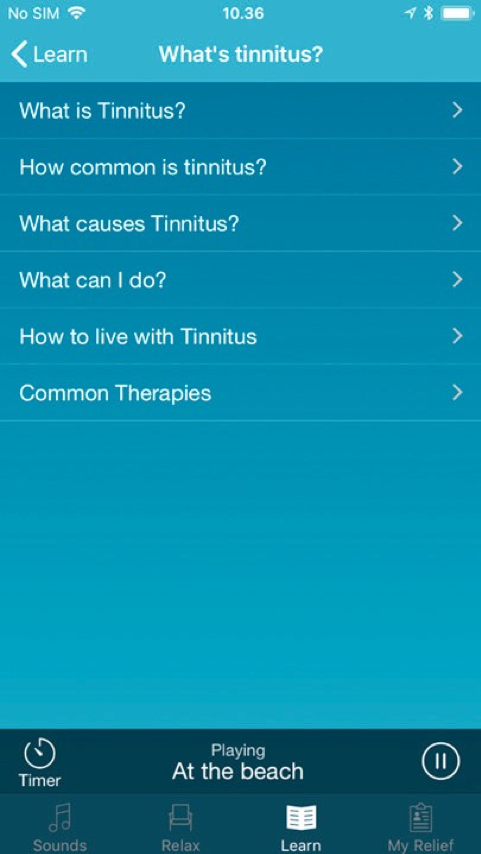
Figure 5. Learn about tinnitus, its causes and common therapies. Also find tips on better sleep and how to change negative thoughts related to tinnitus.

Figure 6. Keep track of ReSound Relief usage over the last week, month and 3 months.
ReSound Relief- My Plan
The more data we collect from our users, the better we can understand how users interact with and utilize ReSound Relief. Over time this can provide us with information that can help design more personalized programs and features for users. A good example of this in Relief, is the My Plan feature. To help us offer more to our users and better understand their needs, we have introduced My Plan, which is a premium subscription-based feature in Relief. At a minimal cost, users can unlock My Plan, giving them access to new features that will provide additional support with personalized guidance on how to better manage their tinnitus.
My Plan offers the following additional features:
- Identify tinnitus type and the main day to day challenges
- Receive new weekly training plans to help manage tinnitus
- Track performance towards defined weekly goals
- Access to premium high definition environmental and musical sounds
My Plan begins by asking the user a series of intake questions regarding their tinnitus to help identify concerns (Figure 7). Next, the user is asked to select the sound that most closely resembles their tinnitus (Figure 8). By answering these questions, we can develop a better picture of someone’s tinnitus and what struggles they are facing. Once the intake questions are complete, a recommended plan will automatically be developed (Figure 9).
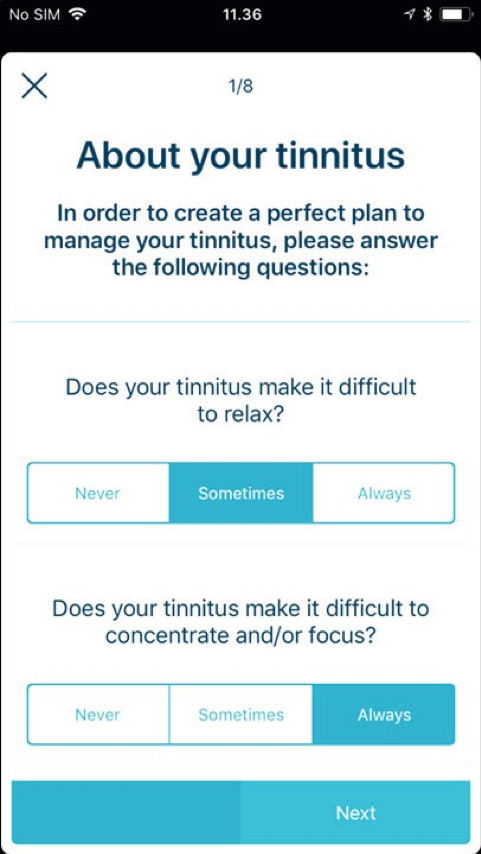
Figure 7. Identify what are the most common problems your tinnitus causes in your daily life.

Figure 8. Listen to different sounds and identify which one most resembles the tinnitus.

Figure 9. Design a personalized tinnitus management plan using My Plan. The plan changes every week to learn helpful tinnitus management skills.
Piecing the Tinnitus Puzzle Together
There is evidence that ReSound Relief can help individuals manage their tinnitus. In the sea of apps aimed at those with tinnitus, ReSound Relief is unique as it is designed specifically for the needs of the tinnitus population based on clinical standards and evidence-based tools. As hearing healthcare apps proliferate, it is important to choose ones that are validated to show they provide true benefit to users, and use data collection to continuously update the app according to user needs. Because apps provide the flexibility for personalization, the mobility for convenience and the user data for continuous updates, validated apps can be powerful tools to help complement clinical concepts and practice. ReSound Relief brings the most important and validated tinnitus and digital concepts together, helping to piece the tinnitus puzzle together for many who so desperately need it.
References
Business Insider Intelligence. (2017). Mobile data will skyrocket by 700% by 2021. www.businessinsider.com. Retrieved 12 October 2018 from www.businessinsider.com/mobile-data-will-skyrocket-700-by-2021-2017-2.
Henry, J. A., Rheinsburg, B., & Zaugg, T. (2004). Comparison of custom sounds for achieving tinnitus relief. Journal of the American Academy of Audiology, 15(8), 585-598.
Henry, J. A., Zaugg, T. L., & Schechter, M. A. (2005). Clinical guide for audiologic tinnitus management II: Treatment. American Journal of Audiology, 14(1), 49-70.
Howard, J. (2016). Americans devote more than 10 hours a day to screen time, and growing. www.cnn.com. Retrieved 12 October 2018 from: https://www.cnn.com/2016/06/30/health/americans-screen-time-nielsen/index.html.
Kessels, R. P. (2003). Patients’ Memory for Medical Information. Journal of the Royal Society of Medicine, 96(5), 219–222.
Kochkin, S., Tyler, R., & Born, J. (2011). MarkeTrak VIII: The prevalence of tinnitus in the United States and the self-reported efficacy of various treatments. Hearing Review, 18(12), 10-27.
Mar, B. (2018). How much data do we create every day? The mind-blowing stats everyone should read. www.forbes.com. Retrieved 12 October 2018 from: https://www.forbes.com/sites/bernardmarr/2018/05/21/how-much-data-do-we-create-every-day-the-mind-blowing-stats-everyone-should-read/#7394155760ba.
Margolis, R. H. (2004). Audiology information counseling – What do patients remember? Audiology Today, 16(2), 14-15.
Piskosz M., Hallenbeck, S. (2015). White paper: ReSound Relief App for Tinnitus: Trial Results. 2015.
Searchfield, G. D., Cameron, H., Irving, S., & Kobayashi, K. (2010). Sound therapies and instrumentation for tinnitus management. The New Zealand Medical Journal, 123(1311), 113-167.
SINTEF. (2013, May 22). Big Data, for better or worse: 90% of world's data generated over last two years. ScienceDaily. Retrieved 12 October 12 2018 from www.sciencedaily.com/releases/2013/05/130522085217.htm
Shargorodsky, J., Curhan, G. C., & Farwell, W. R. (2010). Prevalence and characteristics of tinnitus among US adults. The American journal of medicine, 123(8), 711-718.
Tunkel, D. E., Bauer, C. A., Sun, G. H., Rosenfeld, R. M., Chandrasekhar, S. S., Cunningham Jr, E. R., ... & Henry, J. A. (2014). Clinical practice guideline: tinnitus. Otolaryngology–Head and Neck Surgery, 151(2_suppl), S1-S40.
Tutaj, L., Hoare, D. J., & Sereda, M. (2018). Combined amplification and sound generation for tinnitus: a scoping review. Ear and hearing, 39(3), 412-422.
VBA Annual Benefits Report Fiscal Year 2017. Retrieved 12 October 2018 at https://www.benefits.va.gov/REPORTS/annual_benefits_report.asp
Tinnitus Management Programs and Resources
Please copy and paste links into your web browser:
- Tinnitus Retraining Therapy: https://www.tinnitus-pjj.com/
- Progressive Tinnitus Management: https://www.ncrar.research.va.gov/education/documents/tinnitusdocuments/ index.asp
- Tinnitus Activities Treatment: https://medicine.uiowa.edu/oto/research/tinnitus-and-hyperacusis
- Mindfulness Based Tinnitus Therapy: https://mindfultinnitusrelief.com/index.html
- Otoharmonics:https://otoharmonics.com/
- Neuromonics: https://neuromonics.com/
- Dartmouth College: https://students.dartmouth.edu/wellness-center/wellness mindfulness/relaxation-downloads
Citation
Piskosz, M. (2018). ReSound relief: tinnitus management in the digital age. AudiologyOnline, Article 24076. Retrieved from www.audiologyonline.com


